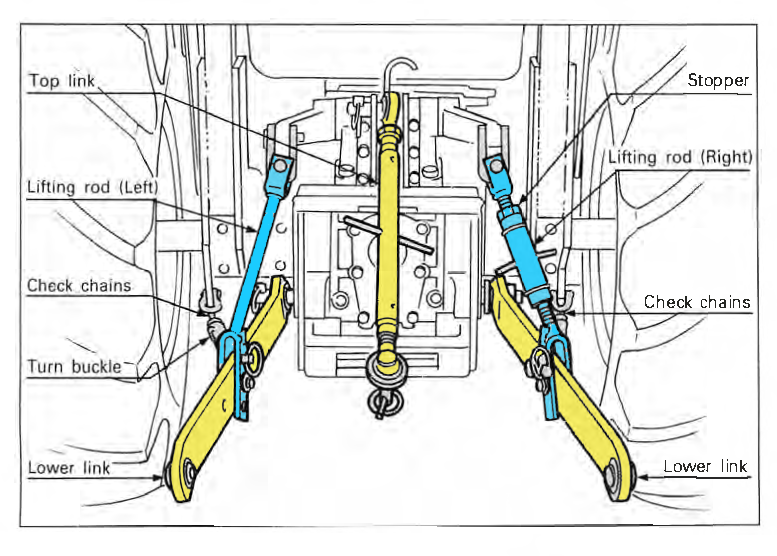A three-point hitch (also called a three-point linkage for those across the pond) is found on most tractors and used for attaching tractor-drawn farming implements for planting, haying, tilling and plowing, spreading fertilizer, brush hogging, mowing, etc. The three-point hitch also gives the tractor much better use of power, weight, and fuel because it transfers the weight of the attached implement to the rear driving wheels of the tractor, giving it much more traction. What you can accomplish with a tractor, a three-point hitch, and an implement – is immeasurable. The invention of the three-point hitch significantly contributed to modern agriculture; however, it's probably not appreciated as much as it should be. Before the creation of the three-point hitch, farmers commonly used drawbars to attach their implements - essentially like a trailer hitch on a truck having a single mounting point to pull behind trailers.
We have Harry Ferguson to thank for the three-point hitch when he patented the mechanism back in 1926. After much trial and error, the form we mostly know today was born and started to take hold. In 1939, the "Ferguson System," as it was called, finally entered the American mass market on the Ford-Ferguson 9N.
You can tell if a tractor has a three-point hitch by checking out the rear of the tractor and looking for three arms in a triangle or letter A shape. Although it's referred to as a three-point hitch, several parts make up the system. Three moveable arms make up the system: The top link arm is at the top of the triangle, but it is usually not powered by the hydraulic system on the tractor. The two bottom arms are controlled by the tractor's hydraulic system, assist with lifting and lowering, and are located at the bottom of the triangle.

Detaching and attaching three-point hitch-compatible implements can be very dangerous. It is essential to ensure the implements are mounted correctly to the hitch for safety and the system's efficiency. After all, that's why Harry Ferguson championed it in the first place! It's essential to make sure you use the correct size pins within their respective hitch hardware category to mount your implements. It is crucial to ensure that your implement's category matches your tractor's category:
Category 0
The smallest category for tractors is up to 20 horsepower, a top link pin diameter of 5/8 inches, a lift arm pin diameter of 5/8 inches, and a spacing between the lower arms of 20 inches.
Category 1
It is the second smallest category for tractors between 20 to 45 horsepower. It has a top link pin diameter of 3/4 inches, a lift arm pin diameter of 7/8 inches, and a spacing between the lower arms of 28 inches.
Category 2
It is the middle category for tractors between 40 to 100 horsepower. It has a top link pin diameter of 1 inch, a lift arm pin diameter of 1-1/8 inches, and a spacing between the lower arms of 34 inches.
Category 3
It is the second-highest tractor category, between 80 to 225 horsepower. It has a top link pin diameter of 1 - 1/4 inches, a lift arm pin diameter of 1-7/16 inches, and a spacing between the lower arms of 40 inches.
Category 4
This is the highest category for tractors greater than 180 horsepower. It has a top link pin diameter of 1 - 3/4 inches, a lift arm pin diameter of 2 inches, and a spacing between the lower arms of 48 inches.
Finally, when using or looking to buy older tractors, make sure that the components are correctly adjusted and not seized up with rust. Generally, a good shot and soak of PB Blaster or equivalent will get everything moving again. Also, ensure that your tractor has the lifting capabilities to lift correctly and mount your implement - many old tractors don't have sufficient lifting capabilities compared to newer tractors.
The three-point hitch is arguably one of the greatest innovations in the history of tractors and farming. Use it safely to your advantage, and happy farming!

